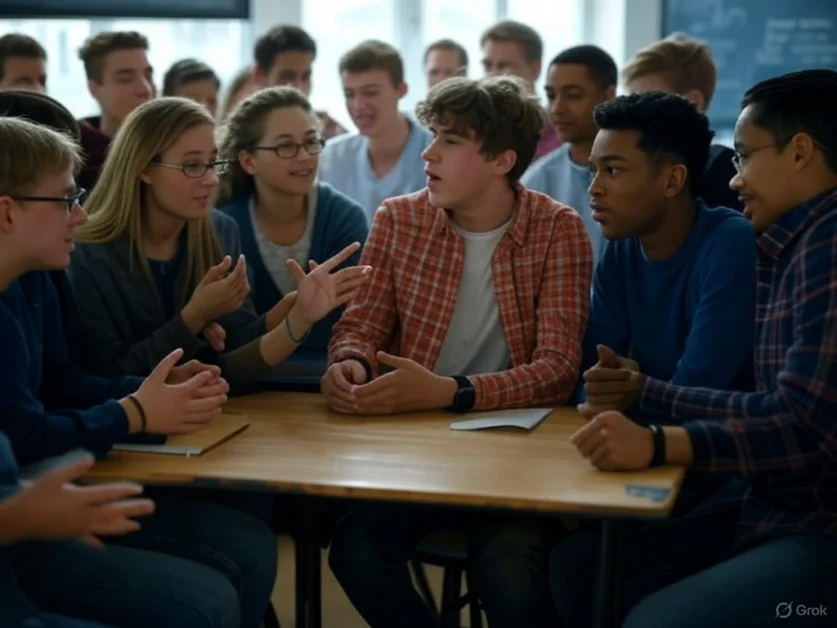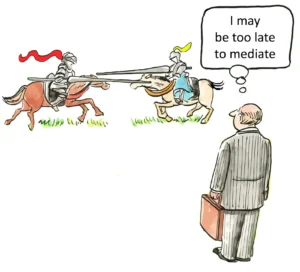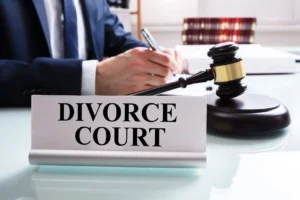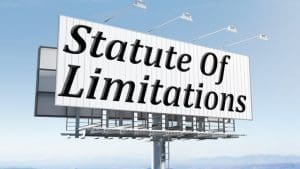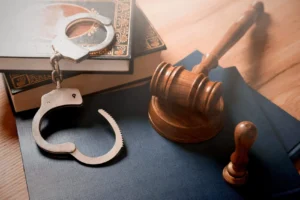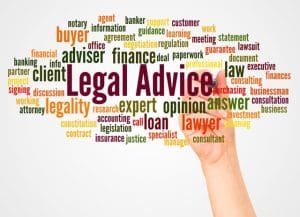How Does the Law Protect Free Speech in Schools?
The question of how the law protects free speech in schools represents one of the most enduring and consequential constitutional inquiries in American jurisprudence. The tension between students’ expressive rights and educational institutions’ need to maintain order creates a complex legal landscape that continues to evolve through judicial interpretation. While the Constitution’s First Amendment guarantees freedom of speech as a fundamental right, its application within educational settings requires careful balancing of competing interests—students’ rights to express themselves against schools’ responsibility to provide effective education in an orderly environment.
The Supreme Court has consistently recognized that students do not “shed their constitutional rights to freedom of speech or expression at the schoolhouse gate.” This principle, articulated in the landmark Tinker decision, established that student expression rights remain protected within educational institutions, albeit with certain limitations tailored to the school environment. These limitations reflect the unique characteristics of educational settings, where authorities must maintain discipline and ensure appropriate learning conditions while respecting constitutional freedoms.
Recent developments have further complicated this legal landscape, particularly regarding off-campus speech in the digital age. The proliferation of social media has created new questions about schools’ authority to regulate student expression that occurs outside traditional educational settings but may nonetheless affect the school environment. The Supreme Court’s 2021 ruling in Mahanoy Area School District v. B.L. addressed this issue directly, holding that while schools may have legitimate interests in regulating certain off-campus speech, their authority in this domain is more limited than their power to regulate on-campus expression.
The Tinker Standard: Substantial Disruption Test
The cornerstone of student speech protection in American jurisprudence remains the Supreme Court’s 1969 decision in Tinker v. Des Moines Independent Community School District. This landmark case arose when students wore black armbands to school to protest the Vietnam War, resulting in their suspension. The Court ruled in favor of the students, establishing that passive, non-disruptive political expression remains protected by the First Amendment even within school settings.
The Tinker decision articulated what has become known as the “substantial disruption test,” which remains the primary standard for evaluating restrictions on student speech. Under this test, school officials may not prohibit student expression unless they can demonstrate that the speech would “materially and substantially interfere with the requirements of appropriate discipline in the operation of the school” or infringe upon the rights of others. This standard places the burden on school authorities to justify speech restrictions rather than requiring students to prove their speech deserves protection.
Importantly, the Court emphasized that mere discomfort with controversial viewpoints or “undifferentiated fear” of disturbance does not justify restricting student expression. Schools cannot silence student speech simply because it expresses unpopular or controversial ideas. This aspect of the Tinker ruling reflects the First Amendment’s core purpose of protecting diverse viewpoints, even those that challenge prevailing orthodoxies or make some listeners uncomfortable.
California’s Enhanced Protections for Student Expression
While the First Amendment establishes baseline protections for student free speech, some states have enacted legislation providing even stronger safeguards. California’s Education Code Section 48907 represents perhaps the most robust statutory protection for student expression in the nation, exceeding the constitutional floor established by Supreme Court precedents.
California’s law explicitly guarantees students’ right to exercise freedom of speech and press, including publication of materials, wearing of buttons or badges, and other forms of expression. The statute permits restrictions only when expression is obscene, libelous, or slanderous, or when it creates a clear and present danger of unlawful acts or substantial disruption. Notably, California’s standard differs from the federal Tinker standard in a crucial respect: under state law, speech cannot be restricted merely because it might lead to disruption; rather, the speech must actually “incite” others to disrupt school activities.
This enhanced protection extends to both public schools and charter schools throughout California. Even more remarkably, California Education Code Section 48950 requires private secondary schools to respect First Amendment principles unless the school is controlled by a religious organization and the speech conflicts with the school’s religious tenets. This provision represents an unusual extension of free speech principles into private educational institutions, which are not typically bound by constitutional constraints that limit government action.
Limitations on Lewd and Vulgar Expression
Despite the robust protections established in Tinker, the Supreme Court has recognized several categories of student speech that receive less constitutional protection. In Bethel School District v. Fraser, the Court addressed a case involving a student who delivered a speech nominating a classmate for student office that contained elaborate sexual metaphors and references. School officials suspended the student for violating school rules against obscene language.
The Court upheld the school’s disciplinary action, establishing that schools may prohibit student speech that is “lewd,” “vulgar,” “indecent,” or “plainly offensive” without violating the First Amendment. This decision recognized schools’ interest in teaching students the boundaries of socially appropriate behavior and distinguished between political expression (protected under Tinker) and sexually explicit or vulgar speech (which schools may regulate more freely).
The Fraser decision reflects the Court’s view that schools serve not merely to impart academic knowledge but also to inculcate “habits and manners of civility” essential to democratic citizenship. This educational mission justifies greater latitude for schools to restrict certain forms of expression that, while perhaps protected in other contexts, may undermine the values schools seek to instill. The decision thus established an important exception to Tinker’s general protection of student speech, allowing schools to maintain standards of decorum and civility in educational settings.
School-Sponsored Speech and Curricular Control
The Supreme Court further refined the boundaries of student speech rights in Hazelwood School District v. Kuhlmeier, which addressed a principal’s decision to remove two pages from a student newspaper produced as part of a journalism class. The articles in question discussed divorce and teen pregnancy, topics the principal considered inappropriate for younger students.
The Court distinguished between personal student expression (governed by Tinker) and school-sponsored speech that might reasonably be perceived as bearing the school’s imprimatur. For the latter category, the Court held that educators may exercise greater control, allowing them to restrict student expression in school-sponsored activities “so long as their actions are reasonably related to legitimate pedagogical concerns.” This “legitimate pedagogical concerns” standard grants schools substantial discretion over curricular matters and school-sponsored activities.
The Hazelwood decision recognized that schools must retain authority to ensure that participants learn intended lessons, that readers or listeners are not exposed to inappropriate material, and that the views of individual speakers are not erroneously attributed to the school. This ruling acknowledges the distinction between schools’ role as forums for student expression and their role as educators responsible for developing appropriate curriculum and educational activities.
Off-Campus Speech in the Digital Age
The proliferation of social media has created new challenges for defining the boundaries of schools’ authority to regulate student expression. The Supreme Court addressed this issue directly in Mahanoy Area School District v. B.L., a case involving a student who, after failing to make the varsity cheerleading squad, posted a profanity-laced message on Snapchat expressing her frustration. Though posted off-campus on a weekend, the message reached school staff, resulting in the student’s suspension from cheerleading for a year.
In its 2021 decision, the Court ruled in favor of the student, holding that while public schools may have a special interest in regulating some off-campus student speech, their regulatory interests are diminished when speech occurs off campus. The Court identified three features of off-campus speech that often diminish schools’ regulatory authority: parents rather than schools normally have responsibility for off-campus conduct; regulating off-campus speech would mean student speech would be subject to regulation 24 hours a day; and schools have an interest in protecting unpopular expression, as America’s public schools are “nurseries of democracy.”
Importantly, the Court declined to create a categorical rule about off-campus speech, instead emphasizing that the specific circumstances of each case must be considered. This approach recognizes the complexity of determining when off-campus speech sufficiently affects the school environment to justify regulation. The decision thus preserves significant protection for students’ off-campus expression while acknowledging that certain forms of off-campus speech—such as severe bullying, threats, or harassment—may still fall within schools’ regulatory authority.
Political and Religious Expression in Schools
Political and religious expression represents a core concern of First Amendment protection, and courts have generally afforded strong protection to such speech in educational settings. The Tinker case itself involved political expression—students wearing armbands to protest the Vietnam War—and established that peaceful political expression remains protected unless it substantially disrupts school operations.
Religious expression presents additional complexities due to the First Amendment’s Establishment Clause, which prohibits government endorsement of religion. Courts have distinguished between private religious expression by students (generally protected) and school-sponsored religious activities (generally prohibited). Students retain the right to pray individually, wear religious symbols, and discuss religious topics with peers during non-instructional time. However, schools must remain neutral toward religion and cannot organize or endorse religious activities.
Recent controversies have emerged regarding student expression on issues related to gender identity and sexual orientation. In 2024, a student asked the Supreme Court to hear his case after being forbidden by his Massachusetts middle school from wearing T-shirts with the message “There are only two genders.” The student’s attorneys argued that the school violated his First Amendment rights by allowing expression of the school’s preferred views on gender while prohibiting his contrary viewpoint. This case highlights the ongoing tension between schools’ interest in preventing what they perceive as harmful speech and students’ right to express controversial or unpopular viewpoints.
Student Press Freedom and Publication Rights
Student journalism represents a particularly important domain of free speech in schools, as school newspapers and other publications serve both educational and expressive functions. The legal framework governing student publications differs significantly depending on whether the publication is school-sponsored or independent, with the latter receiving stronger constitutional protection.
For school-sponsored publications, the Hazelwood standard generally applies, allowing school officials to exercise editorial control over content for legitimate pedagogical reasons. This standard grants schools substantial discretion to review and restrict content in official school newspapers, yearbooks, and similar publications, particularly when these publications are produced as part of the curriculum.
However, some states have enacted “anti-Hazelwood” laws that provide greater protection for student journalists than the federal constitutional standard. California’s Education Code Section 48907, for example, specifically protects student press rights, prohibiting prior restraint of student publications except when content is obscene, libelous, or substantially disruptive. These state laws reflect a recognition that student journalism serves important educational purposes by teaching civic engagement, critical thinking, and responsible exercise of free speech rights.
Protest Rights and Civil Disobedience
Student protests and demonstrations represent a significant form of political expression that receives substantial, though not unlimited, constitutional protection. The right to engage in peaceful protest derives directly from Tinker’s protection of symbolic political expression, though schools retain authority to enforce content-neutral time, place, and manner restrictions that serve legitimate educational interests.
Schools may discipline students for missing class to participate in walkouts or demonstrations, as compulsory attendance laws create a legitimate basis for requiring students to attend scheduled classes. However, schools cannot impose harsher punishment for politically motivated absences than for other unexcused absences. This principle ensures that disciplinary measures target the conduct (missing class) rather than the content of the expression (the political message of the protest).
Outside of school hours and off campus, students generally enjoy the same protest rights as other citizens. Schools have limited authority to discipline students for participation in off-campus demonstrations unless the conduct substantially disrupts school operations or violates other legitimate school rules. This distinction preserves students’ ability to engage in civic activism while maintaining schools’ authority to enforce reasonable attendance and conduct requirements.
Social Media and Digital Expression
The ubiquity of social media has created new frontiers for student expression rights, raising complex questions about schools’ authority to regulate online speech. The Mahanoy decision established important principles governing schools’ authority in this domain, but many questions remain unresolved as technology continues to evolve.
As a general rule, schools have limited authority to punish students for content posted off campus and outside school hours that does not substantially disrupt school operations. This principle preserves students’ ability to express themselves freely on social media platforms without constant fear of school discipline. However, certain categories of online speech may still fall within schools’ regulatory authority, including true threats, severe bullying or harassment targeting other students, or speech that substantially disrupts the educational environment.
The challenge for courts and school administrators lies in distinguishing between genuinely disruptive online speech and expression that merely causes discomfort or controversy. The Tinker standard requires more than mere disagreement or offense to justify restrictions on student speech, but applying this principle to the digital realm requires careful consideration of how online expression affects the school environment. As technology continues to evolve, courts will likely continue refining the boundaries of schools’ authority to address digital expression that affects educational settings.
Balancing Free Expression and Educational Needs
The legal framework governing free speech in schools reflects an ongoing effort to balance competing values: students’ expressive rights against schools’ need to maintain appropriate educational environments. This balancing requires careful consideration of context, including the age of students, the nature of the expression, and its potential impact on the educational process.
For younger students, courts have generally recognized that schools have greater latitude to restrict expression, reflecting children’s developing maturity and judgment. Elementary schools serve different educational functions than high schools or universities, and the legal standards governing student expression reflect these differences. The Supreme Court has acknowledged that “the First Amendment rights of students in the public schools are not automatically coextensive with the rights of adults in other settings,” recognizing the unique characteristics of educational environments.
At the college level, courts have generally afforded stronger protection to student expression, reflecting the greater maturity of college students and higher education’s distinct mission of encouraging intellectual exploration and debate. College campuses have traditionally been viewed as quintessential marketplaces of ideas where free expression receives robust protection. However, recent controversies surrounding campus speech codes, trigger warnings, and disinvitations of controversial speakers have raised questions about the state of free expression in higher education.
Recent Trends and Emerging Issues
Recent years have witnessed significant developments in the legal landscape governing student speech rights, with several emerging issues likely to shape future jurisprudence in this area. The Supreme Court’s 2021 Mahanoy decision represented a major development in addressing off-campus speech, but many questions remain unresolved about schools’ authority in the digital age.
One emerging issue concerns schools’ authority to address student speech related to controversial social and political topics. Recent litigation has challenged schools’ restrictions on expression related to gender identity, racial issues, and other contentious subjects. These cases raise difficult questions about when viewpoint-based restrictions may be justified to protect students from perceived harm versus when such restrictions unconstitutionally suppress legitimate, if controversial, expression.
Another developing area involves the intersection of Title IX requirements and free speech protections. In April 2024, the Department of Education released new Title IX regulations that some critics argue may undermine campus free speech rights by adopting an expansive definition of harassment that departs from Supreme Court precedent. This tension between preventing harassment and protecting free expression will likely generate significant litigation as institutions implement the new regulations.
Conclusion: The Continuing Importance of Free Expression in Educational Settings
The legal protections for free speech in schools reflect fundamental values in our constitutional system: the importance of free expression in a democratic society and the vital role education plays in preparing young people for citizenship. While these values sometimes appear in tension, they ultimately serve complementary purposes in developing informed, engaged citizens capable of participating effectively in democratic self-governance.
The Supreme Court’s jurisprudence in this area has consistently recognized that protecting student expression serves important educational functions. As the Court observed in Tinker, schools cannot be “enclaves of totalitarianism” where students are “confined to the expression of those sentiments that are officially approved.” Rather, schools must respect students’ expressive rights while fulfilling their educational mission, teaching by example the importance of constitutional principles in our society.
At the same time, courts have recognized that schools must maintain authority to fulfill their educational responsibilities, including teaching appropriate behavior and maintaining environments conducive to learning. The legal framework governing student speech reflects this balance, protecting core expressive rights while acknowledging schools’ legitimate regulatory interests in educational settings.
As technology continues to transform how students communicate and express themselves, courts will undoubtedly continue refining the boundaries of protected student speech. These developments will require careful attention to both enduring constitutional principles and evolving social contexts. What remains constant, however, is the fundamental importance of free expression in educational settings—not merely as a right to be protected, but as a value to be taught and practiced in preparing the next generation of citizens for participation in our democratic society.
Citations:
- First Amendment Rights in Schools
- SCOTUS Cases on Student Free Speech
- ACLU IL on Student Free Speech Rights
- Federal Court on Student Speech in Class
- Free Speech in High Schools
- Debate on Broader Student Speech Rights
- College Students on Free Expression 2024
- Title IX Rules Undermine Campus Free Speech
- Student Expression Rights Guide
- Overview of Student Rights
- Freedom of Speech in U.S. Schools
- Student Seeks Supreme Court Free Speech Case
- Tinker Case on Student Free Speech
- FindLaw on Student Free Speech Rights
- NYCLU on Free Speech in Public Schools
- ACLU Guide to Students’ Rights
- EBSCO on Student Rights in Schools
- Implications of Recent School Speech Case
- Constitutional Essay on Student Speech
- Stanford Law Review on Student Expression
- NEA on First Amendment for Educators
- Louisville Student Free Speech Guide
- UGA Law on Student First Amendment Rights
- Texas Senate Bill on University Free Speech
- MTSU Encyclopedia on Student Rights
- ACLU Court Cases on Student Speech
- ABA on Free Speech and Press Rights
- Knight Survey on Student Free Speech Support
- Students Bill of Rights Act 2024
- FIRE Cases on Free Speech
- Year in Campus Speech Controversies
- ACLU on Schoolhouse Free Speech Rights
- NYCLU on Free Speech in Higher Ed
- ABA on Online Speech Impact on Students
- Campus Free Speech and Social Media
- Berkeley Law on University Professor Speech
- Semantic Scholar on Student Speech Rights
- First Amendment Protections for Writers
- AAU on Fostering Campus Free Speech
- Reddit on Finding Low Competition Keywords
- Semantic Gradients Classroom Strategy
- Lawsuit Over Trademark in AdWords
- 2025 College Free Speech Rankings
- House Passes College Free Speech Law
- EFF on Legal Issues for Student Bloggers
- Finding Easy-to-Rank Keywords Guide
- Stanford Law Review on Student Expression
- UCLA Law on Search Engine Speech
- Low Competition Keyword Strategies
- William & Mary Law Review on Free Speech
